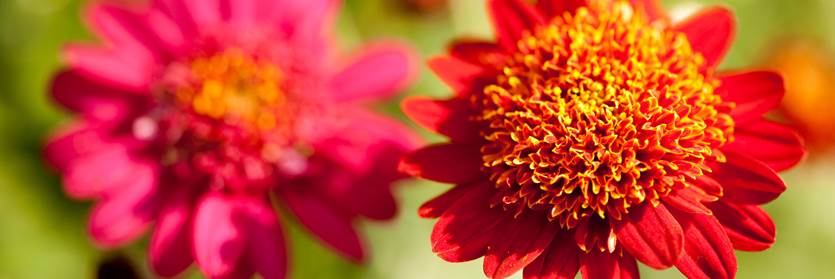Inside The New York Botanical Garden
Chrysanthemum
Posted in Around the Garden on November 13 2012, by Sonia Uyterhoeven
Sonia Uyterhoeven is the NYBG’s Gardener for Public Education.
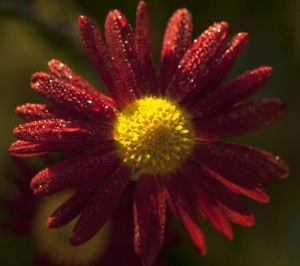 After a week of election post-mortems, the NYBG is now ready to follow suit with the results from our ‘choose your favorite mum’ poll. For those of you not already in the know, I posted a blog on October 26 entitled ‘Mum Madness.’ In it, I explained our breeding program for Korean mums at the Garden.
After a week of election post-mortems, the NYBG is now ready to follow suit with the results from our ‘choose your favorite mum’ poll. For those of you not already in the know, I posted a blog on October 26 entitled ‘Mum Madness.’ In it, I explained our breeding program for Korean mums at the Garden.
To make things easy for newcomers, here is the encapsulated version: every year we collect seed from our Korean mum collection and grow them on through the next year to see if we have any new varieties. We look for certain traits–compact growers, flowering time, flower forms, and color. When we find one we like, we keep it to propagate via cuttings.
This year we asked the public to join us in the selection process. We went out to the Korean mum Trial Bed in the Home Gardening Center and chose six mums that differed from our current collection and had great appeal, photographing and displaying them in the October 26 blog. They were also labeled in the garden and, through signage, visitors were asked to vote for their favorite selection by texting in their answers.
Read More
Posted in Around the Garden, Photography on November 4 2012, by Matt Newman
Just a little peek at the chrysanthemums creating rainbows in the Nolen Greenhouses for Living Collections, where the Bourke-Sullivan Display House is now holding this year’s Kiku creations. If you’ve never seen botanical sculpture at its most essential height, visit the Ozukuri, Kengai, Ogiku, and many other stylistic mum masterpieces from now through Sunday, November 18.
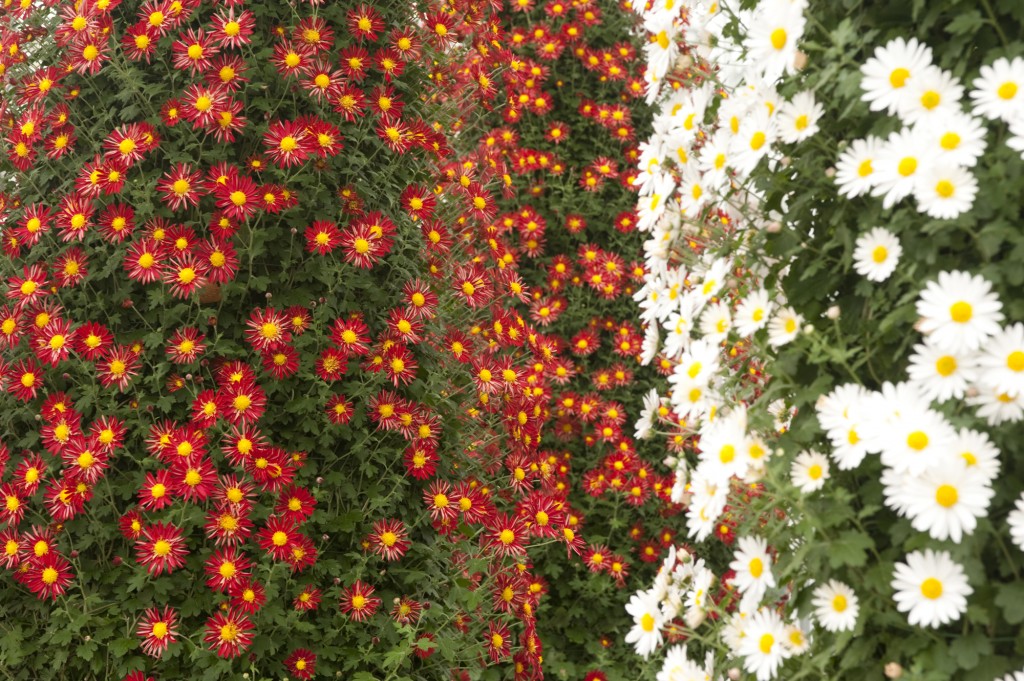
Photo by Ivo M. Vermeulen
Posted in Gardening Tips on October 16 2012, by Sonia Uyterhoeven
Sonia Uyterhoeven is the NYBG‘s Gardener for Public Education, often hosting live gardening demonstrations for visitors on Saturdays and Sundays.
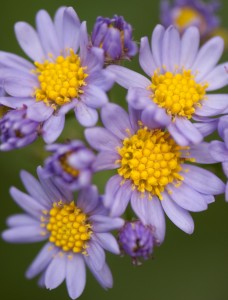 The other week, I was with the Students of Professional Horticulture, taking them on a walk around the Home Gardening Center while discussing wildlife gardening. Technically, any time of the year presents the opportunity to lecture about attracting wildlife into the garden, but fall is a spectacular occasion.
The other week, I was with the Students of Professional Horticulture, taking them on a walk around the Home Gardening Center while discussing wildlife gardening. Technically, any time of the year presents the opportunity to lecture about attracting wildlife into the garden, but fall is a spectacular occasion.
We passed by one of my favorite asters, Aster tartaricus ‘Jindai’, that was smothered with bees and butterflies–monarchs and red admirals on this occasion. ‘Jindai’ is a compact tartarian aster that reaches three to four feet in height (the species can grow up to six feet tall). It was discovered at the Jindai Botanical Garden in Tokyo, Japan.
This sturdy variety has stolen my heart since it doesn’t require any staking. The large foliage of the aster is full at the base of the plant and then tapers nicely as it extends up the stem. In September and October a profusion of flowers adorns these tall stems, a lovely combination of medium purple ray flowers with bright, buttery yellow disc flowers. The complementary colors play off of each other exquisitely.
Read More
Posted in Exhibitions, Kiku on October 29 2009, by Plant Talk
 |
Jessica Blohm is Interpretive Specialist for Public Education. |
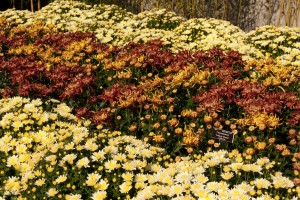 A chrysanthemum blossom, which appears to be a single flower, is actually made up of hundreds of tiny flowers.
A chrysanthemum blossom, which appears to be a single flower, is actually made up of hundreds of tiny flowers.
Chrysanthemums are members of the Asteraceae (aster or daisy) family. All plants in the aster family are composites. They have flower heads made up of many tiny individual flowers. Other composites include asters, sunflowers, black-eyed Susans, dandelions, marigolds, and zinnias.
There are two types of composite flowers, ray and disc. Some composites have both ray and disc flowers; others have only ray or disc flowers.
The National Chrysanthemum Society defines 13 different classes of chrysanthemums with varying flower forms: irregular incurve, reflex, regular incurve, decorative, intermediate incurve, pompon, single and semi-doubles, anemone, spoon, quill, spider, brush and thistle, and unusual. Many of these 13 classes are on display at Kiku in the Japanese Autumn Garden. To see examples of each, click here.
Get Your Tickets
Posted in Exhibitions, Kiku on October 22 2009, by Plant Talk
Both Battle Cold, Damp Weather in New York to Perform at Peak
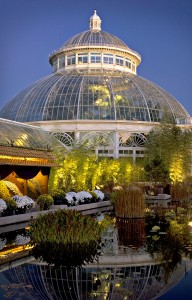 The grounds crew in Yankee Stadium has not been the only team compensating for Mother Nature’s freakishness this month.
The grounds crew in Yankee Stadium has not been the only team compensating for Mother Nature’s freakishness this month.
Across the Bronx at The New York Botanical Garden, the horticulture team is also doing some fancy footwork due to the weather—manipulating the Japanese-style chrysanthemum “sculptures” in the spectacular exhibition Kiku in the Japanese Autumn Garden.
For this year’s eagerly awaited flower show, cold temperatures and overcast skies have NYBG staff gardeners giving the mums needed extra light and warmth by bringing them back into the greenhouse.
Specific amounts of light and heat are needed to bring the chrysanthemums into flower. Those needs in this, the final year that the Garden is presenting its most elaborate show, are in direct contrast to what was needed in the first two years of the exhibition. Then, warm, late-summer temperatures persisted through October causing staff gardeners to scramble in order to shade and cool the plants to be presentable for the show.
Always anticipating change and preserving flexibility, the gardeners have grown a backup set of Kiku mums, keeping them outside in the chill all the time. This backup mum set can be moved into the show to replace the first set in case warm weather and bright sun send their flowers past peak before the show ends.
Visitors can appreciate this marvelous manipulation of Mother Nature and see the fruits of the horticulture team’s labor now through November 15. Kiku in the Japanese Autumn Garden showcases the spectacular autumn landscapes of Japanese gardens, with scarlet maples and golden bamboos against the backdrop of emerald conifers and, when the sun cooperates, clear blue skies. More chrysanthemums than ever are on display in traditional and contemporary display styles, with bonsai providing another fabulous element to the exhibition. On weekends, participate in guided tours, autumn gardening demonstrations, and taiko drumming performances.
Get Your Tickets
Posted in Exhibitions, Kiku on October 16 2009, by Plant Talk
Last Year to Experience this Fall Extravaganza
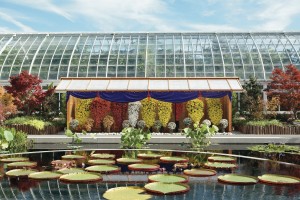 Chrysanthemums trained in a variety of growing styles, maples aglow in autumn colors, and the soft, rustling effects of grasses and bamboos showcase the splendor and diversity of Japanese gardens in Kiku in the Japanese Autumn Garden, from October 17 through November 15 in the Enid A. Haupt Conservatory Courtyards.
Chrysanthemums trained in a variety of growing styles, maples aglow in autumn colors, and the soft, rustling effects of grasses and bamboos showcase the splendor and diversity of Japanese gardens in Kiku in the Japanese Autumn Garden, from October 17 through November 15 in the Enid A. Haupt Conservatory Courtyards.
This is the Botanical Garden’s third and final showing of kiku—chrysanthemums meticulously trained by Garden horticulturists for up to 11 months and resulting in elaborate displays. Cultivated from tiny cuttings, the plants are pinched back, tied to frames, and nurtured to grow into particular shapes. The four traditional styles (single stem, thousand bloom, cascade, and driving rain) presented under special decorative structures known as uwaya are accompanied by large installations of contemporary styles such as cones, columns, and spheres.
Bonsai, a crowd favorite, is shown throughout the exhibition in the Courtyard and a special display of bonsai will be presented in the Conservatory through November 1. Other happenings during Kiku include educational children’s activities in Japanese Autumn Adventures, a Japanese Plant Tour throughout the grounds, weekend performances by taiko drummers, an art exhibition, Ex Libris: Treasures from the LuEsther T. Mertz Library, and a photography show, The Presence of Trees.
Click here to watch video highlights of Kiku.
Get Your Tickets
Posted in Exhibitions, Kiku on October 8 2009, by Plant Talk
 |
Todd Forrest is Vice President for Horticulture and Living Collections.
|
 |
Jessica Blohm is Interpretive Specialist for Public Education. |
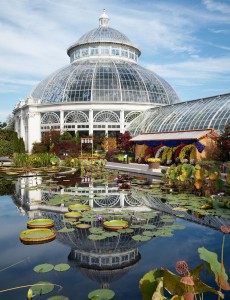 With comparable latitude and climate as eastern North America, Japanese gardens and hillsides in fall become a dappled canvas of scarlet, gold, and orange, just as they do here. Millions of Japanese travel in cars, buses, and trains to reach a favorite viewing spot—often a rugged mountain landscape or a garden belonging to a temple or shrine—to view the changing leaves and flowers.
With comparable latitude and climate as eastern North America, Japanese gardens and hillsides in fall become a dappled canvas of scarlet, gold, and orange, just as they do here. Millions of Japanese travel in cars, buses, and trains to reach a favorite viewing spot—often a rugged mountain landscape or a garden belonging to a temple or shrine—to view the changing leaves and flowers.
Maples (kaede) are the main source of stunning autumn colors along with emerald conifers, bamboo, chrysanthemums (kiku), and Japanese perennials, grasses, and ferns. Beginning October 17, the Enid A. Haupt Conservatory Courtyards will again come alive with two gardens that celebrate ancient Japanese horticultural traditions and the brilliant hues of chrysanthemums and Japanese garden plants in Kiku in the Japanese Autumn Garden.
For the past two years, chrysanthemums trained using traditional Japanese methods have been the centerpiece of the Garden’s autumn offerings. This year will be the final showing of this special presentation of kiku, and it will be combined with other elements that make viewing Japanese gardens in autumn memorable.
Garden design has been an important Japanese art for centuries. Many traditional Japanese gardens were closed to the public. Built by the elite for their own use or as temple gardens, they served as places for peaceful worship and quiet contemplation. Gardens in Japan are not simply a collection of plants; they are an interpretation of the natural landscape. Each element has a specific meaning and inspiration.
Read More
Posted in Exhibitions, Kiku on October 17 2008, by Plant Talk
[kml_flashembed movie=”https://www.nybg.org/files/kiku.swf” align =”right” height=”300″ width=”155″ /]
Autumn is here and Kiku returns to The New York Botanical Garden from October 18 through November 16. Time to perform your “civic duty” and vote…for your favorite kiku style.
Is it the majestic dome-shaped array of the ozukuri (“thousand bloom”)? Could it be the colorful kengai (“cascade”) that resemble “waterfalls” of wild chrysanthemums? How about the towering ogiku (“single stem”) arranged in symbolic rows representing the colors of the horse bridles of Japan’s Imperial family? Maybe it’s this year’s new display style, shino-tsukuri (“driving rain”)?
Click the images on the poll to learn more about each variety and then choose your favorite. (P.S. You can vote as many times as you want. We won’t tell anyone!) Spread the word and get others to vote, too. Then, come visit Kiku: The Art of the Japanese Chrysanthemum and see the impressive cultural exhibition and flower show first-hand.
The polling widget will live on the upper right corner of the blog until Election Week (the first week of November), when we will announce the results.
 After a week of election post-mortems, the NYBG is now ready to follow suit with the results from our ‘choose your favorite mum’ poll. For those of you not already in the know, I posted a blog on October 26 entitled ‘Mum Madness.’ In it, I explained our breeding program for Korean mums at the Garden.
After a week of election post-mortems, the NYBG is now ready to follow suit with the results from our ‘choose your favorite mum’ poll. For those of you not already in the know, I posted a blog on October 26 entitled ‘Mum Madness.’ In it, I explained our breeding program for Korean mums at the Garden.